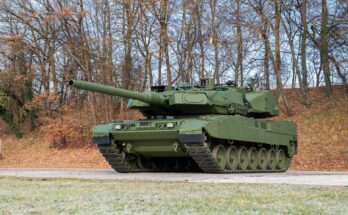
The U.S. is withdrawing approximately 1,000 troops from northeast Syria following a Turkish incursion into the region. Many of the U.S. troops are heading to Iraq, and a small number are expected to remain in southern Syria.
On October 9, Turkey announced the start of Operation Peace Spring, an effort to establish a security buffer zone along the border between Turkey and Syria. Turkish military forces are attempting to clear the region of the Kurdish Syrian Democratic Forces (SDF), which Ankara accuses of being linked to the terrorist group Kurdistan Worker’s Party (PKK).
The SDF has been critical in the mission against ISIS, having served with the aid of U.S. troops to combat the insurgents. A small contingent of the U.S. force, some 50 to 150 soldiers, were removed from the buffer zone last week, tacitly giving the green light for the Turkish operation.
On October 11, U.S. troops near the city of Kobani came under fire from Turkish artillery, despite the fact that Washington had informed Ankara of the exact location of all U.S. forces. No injuries were reported, but the incident highlighted the risks for U.S. troops. Just days later, President Trump ordered the withdrawal of all remaining troops from northeast Syria. U.S. Defense Secretary Mark Esper said the risk to U.S. troops had reached an unacceptable level and warned that Washington was at risk of being pulled into a broader conflict.
At the same time, Esper said the Turkish operation undermined the mission to defeat ISIS, and even threatened the relationship between Washington and Ankara. “Turkey’s unilateral action was unnecessary and impulsive,” Esper said in a statement. “President Erdogan bears full responsibility for its consequences, to include a potential ISIS resurgence, possible war crimes, and a growing humanitarian crisis. The bilateral relationship between our two countries has also been damaged.”
Washington’s security relationship with Turkey has already been tense of late, and Ankara’s recent acceptance of Russian S-400 missile defense systems resulting in the country’s removal from the F-35 program. Now, in the wake of the Turkish military operation, the U.S. has threatened economic retaliation, which could end up impacting arms sales as well. The U.S. must also decide whether it feels comfortable enough to continue storing more than 50 nuclear weapons in Turkey. The weapons are held at the strategically important Incirlik Air Base.
The U.S. also stands to lose influence in Syria, as SDF leadership is discussing possible deals with the Syrian regime and Russia in order to thwart the Turkish invasion.
Shaun's deep-rooted interest in military equipment continues in his role as a senior defense analyst with a focus on the United States. He played an integral role in the development of Forecast International's U.S. Defense Budget Forecast, an interactive online product that tracks Pentagon acquisition programs throughout the congressional budget process. As editor of International Military Markets – North America, Shaun has cultivated a deep understanding of the vast defense markets in the United States and Canada. He is a regular contributor to Forecast International's Defense & Security Monitor blog and has co-authored white papers on global defense spending and various military programs.




